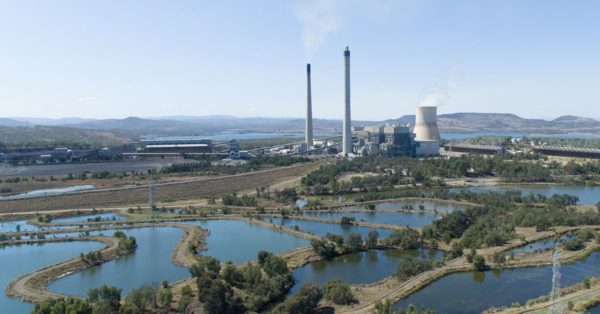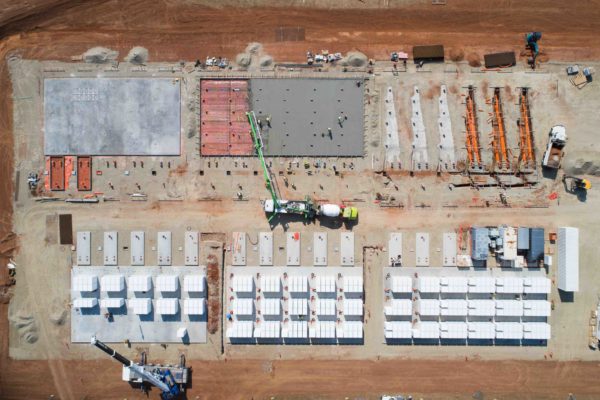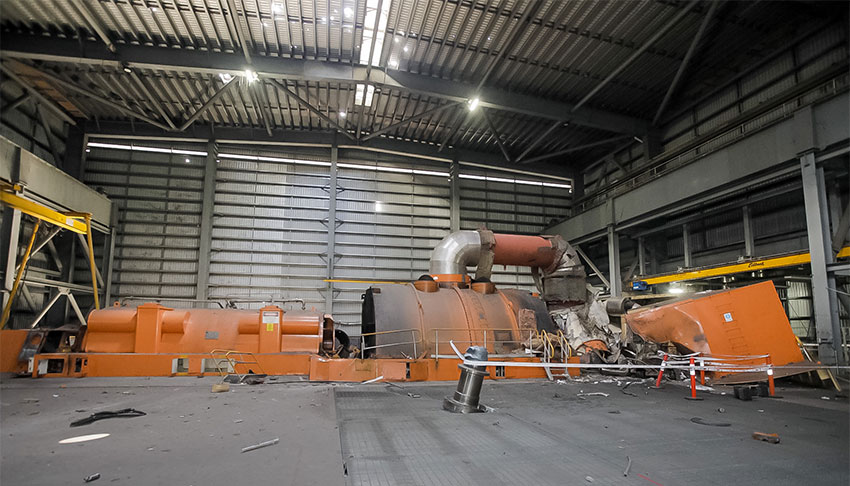The Queensland Government-owned CS Energy has confirmed it plans to rebuild the damaged Callide C4 unit but the Queensland Conservation Council (QCC) has lampooned the idea, saying this is an ideal opportunity for the government to invest in battery storage systems that will better support the grid of the future.
“It’s as if the gearbox has failed on CS Energy’s 20-year-old car,” QCC director Dave Copeman said.
“Why would they spend money on an inefficient car approaching the end of its life when they could buy something more reliable, cheaper and fit for the future? CS Energy should upgrade to a Tesla.
“Large-scale storage could have helped us … by responding almost instantaneously to the loss of Callide C.”
The explosion at the Callide C coal-fired power station in late May caused chaos across Queensland’s electricity system.
The Australian Energy Market Operator (AEMO) has revealed the incident tripped multiple fossil-fuel generators, including the nearby Callide B, and another six coal-fired units at the Stanwell and Gladstone generators, leaving an estimated 477,000 homes and businesses without power.
CS Energy CEO Andrew Bills said crews had been working on site at the Callide Power Station this week to bring the three intact generating units back online but there was still no explanation for the explosion.
“It is too early to speculate as to the cause of the incident and we need to undertake a thorough and comprehensive investigation working with all authorities and regulators to determine the cause of this incident,” he said.
“There will be multiple stakeholders investigating what has occurred at Callide and we need to ensure it is a coordinated, comprehensive and independent process.”

Image: CS Energy
Bills said the three intact units at the Callide Power Station will be back online within weeks while it is expected to be at least 12 months before the damaged C4 unit is operational. The Callide B units will be returned to service on June 11 and June 21 respectively while the C3 unit at Callide C, which CS Energy owns in a 50/50 joint venture with InterGen, will return to service on June 22.
Bills confirmed it remains CS Energy’s intention to rebuild the damaged unit, despite reports suggesting the cost of repairing the unit could be as much as $200 million.
Copeman was critical of the decision, saying CS Energy had written down the value of Callide C by nearly 50% last year, as it was unable to compete with new large-scale renewable energy projects and rooftop solar which are continuing to push wholesale energy prices down.
“Rebuilding Callide C4 in an over-supplied, unprofitable market for coal would be sheer perversity on behalf of the Queensland Government,” he said.
“We urge them to work with CS Energy and private partners, Intergen, after the situation at Callide is stabilised, to set out and fund a transition plan to ensure workers and Queenslanders benefit from the energy transformation.”
Queensland Greens MP Michael Berkman has also called on the State Government to divert the millions required to repair Callide C towards a big battery and a transition package for displaced workers.
“Spending $200 million on propping up coal would be throwing good money after bad,” he said.
“Coal is increasingly expensive and unreliable. For the cost of patching up this out-of-date technology, Queensland could have another big battery.”

Photo: Neoen
Under the Greens’ plan at least $150 million would be set aside to build a big battery while $50 million would be allocated to assist workers affected by the early closure of the coal-fired power plant:
“We know that early closures will be necessary for the State Government to meet even its 50% renewables target by 2030,” Berkman said.
“At the moment New South Wales is planning Australia’s biggest battery – let’s go one better and build the biggest right here in the Sunshine State.”
Queensland does not currently have a big battery but the 100 MW/150 MWh Wandoan South Battery Energy Storage System (BESS) project, being developed on the Darling Downs by Singapore-based Vena Energy, is nearing completion with connection to the transmission network now in the final stages.
The State Government has also announced the state-owned energy company Stanwell is progressing plans to develop a 150 MW/300 MWh battery adjacent to the Tarong Power Station near Nanango in the South Burnett.
AGL Energy plans to build a 100 MW/150 MWh battery next to the 453 MW Cooper’s Gap wind farm near Kingaroy while Neoen is planning to build 150 MW of battery storage as part of its proposed 460 MW Western Downs Green Power Hub to be constructed near Chinchilla and has also submitted plans to develop a 100 MW battery project in Queensland’s far north.
This content is protected by copyright and may not be reused. If you want to cooperate with us and would like to reuse some of our content, please contact: editors@pv-magazine.com.









By submitting this form you agree to pv magazine using your data for the purposes of publishing your comment.
Your personal data will only be disclosed or otherwise transmitted to third parties for the purposes of spam filtering or if this is necessary for technical maintenance of the website. Any other transfer to third parties will not take place unless this is justified on the basis of applicable data protection regulations or if pv magazine is legally obliged to do so.
You may revoke this consent at any time with effect for the future, in which case your personal data will be deleted immediately. Otherwise, your data will be deleted if pv magazine has processed your request or the purpose of data storage is fulfilled.
Further information on data privacy can be found in our Data Protection Policy.